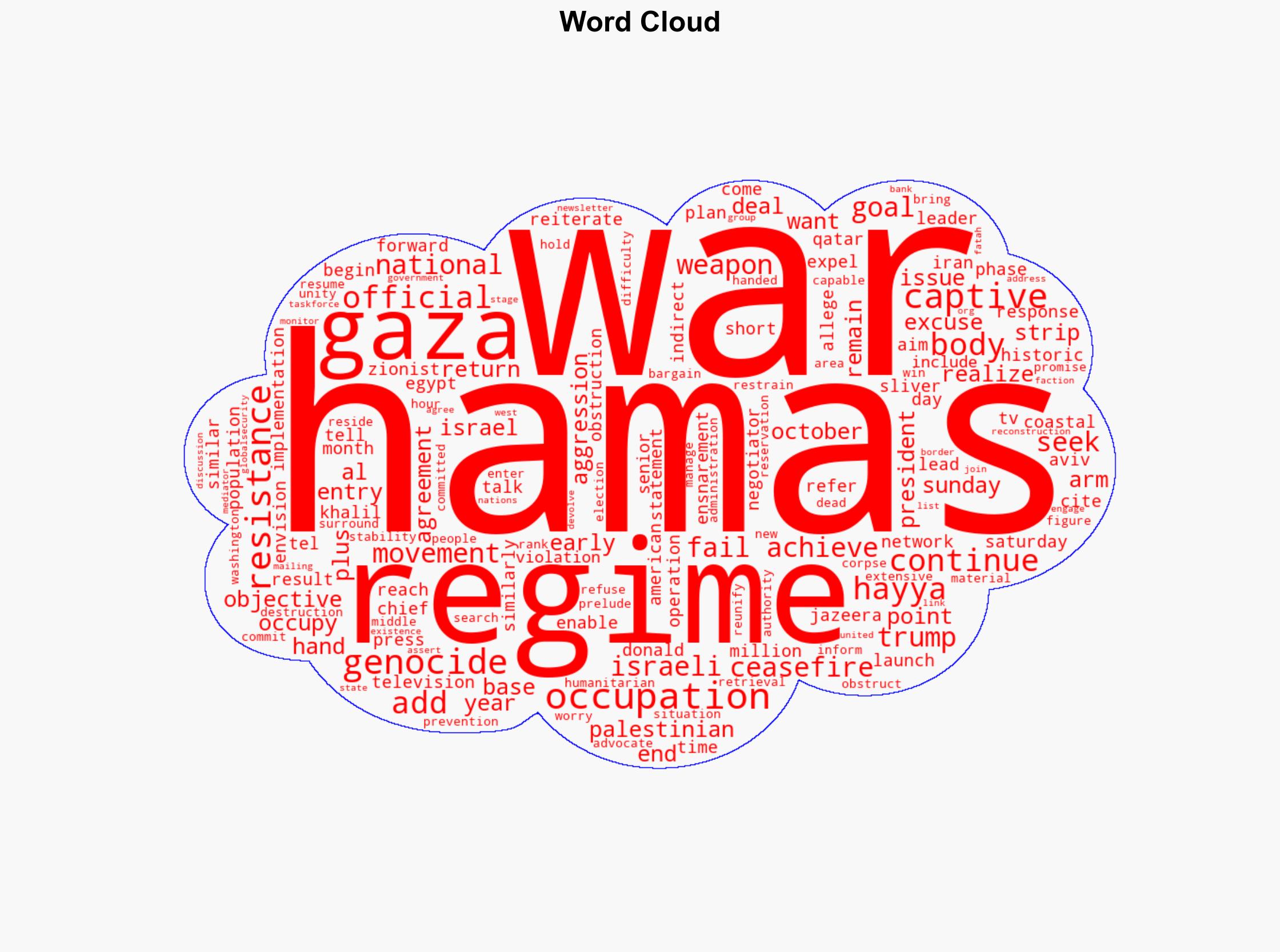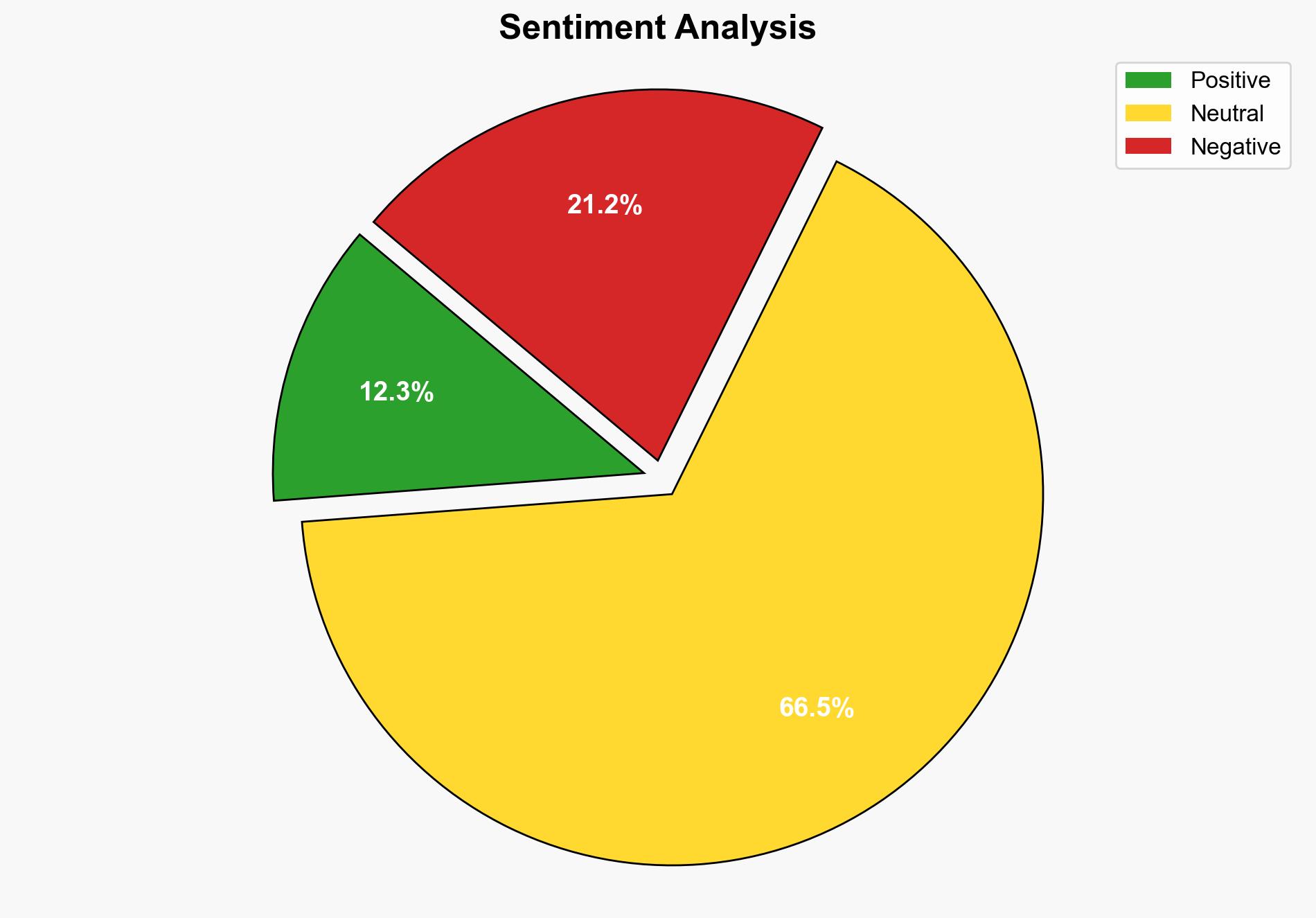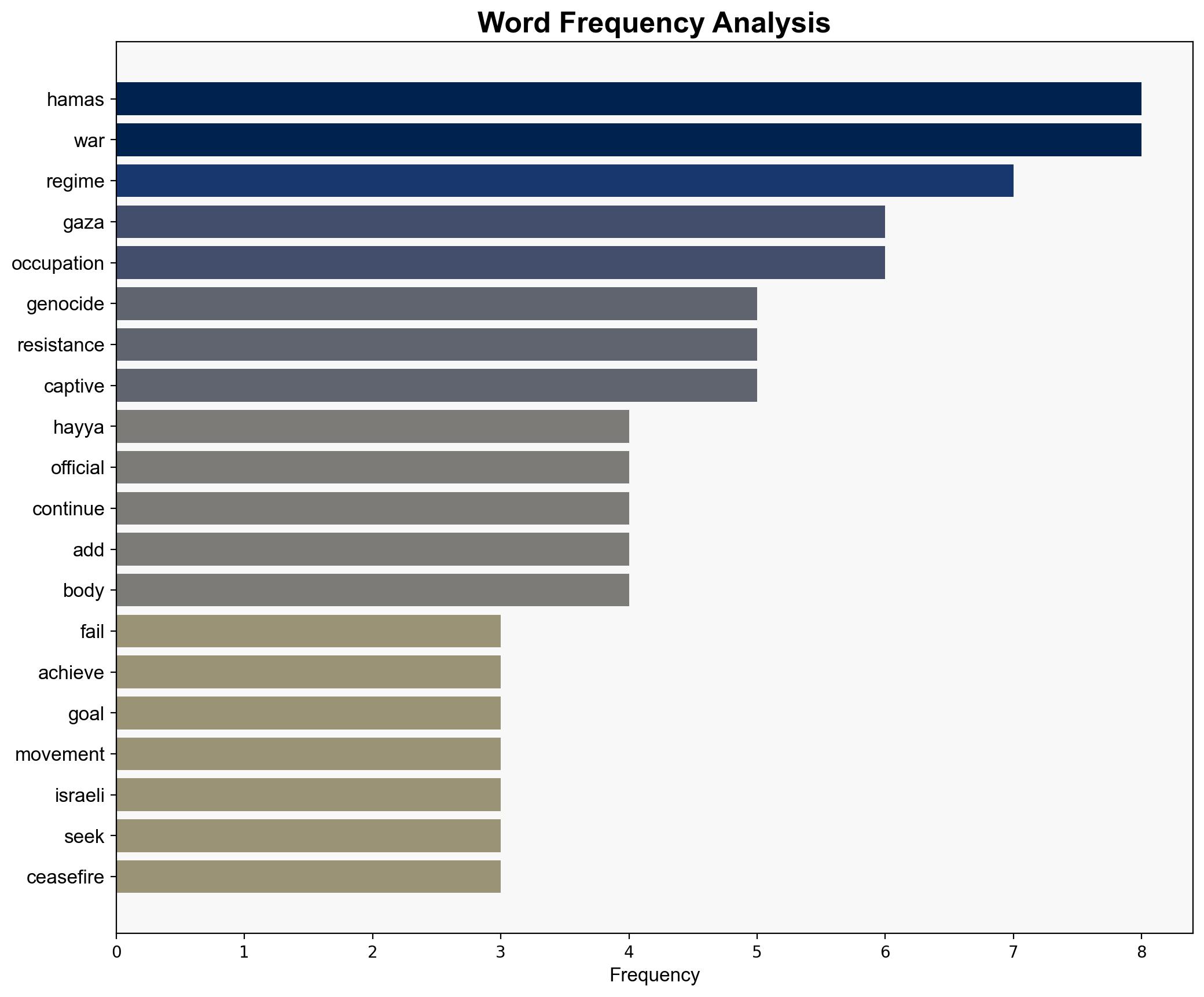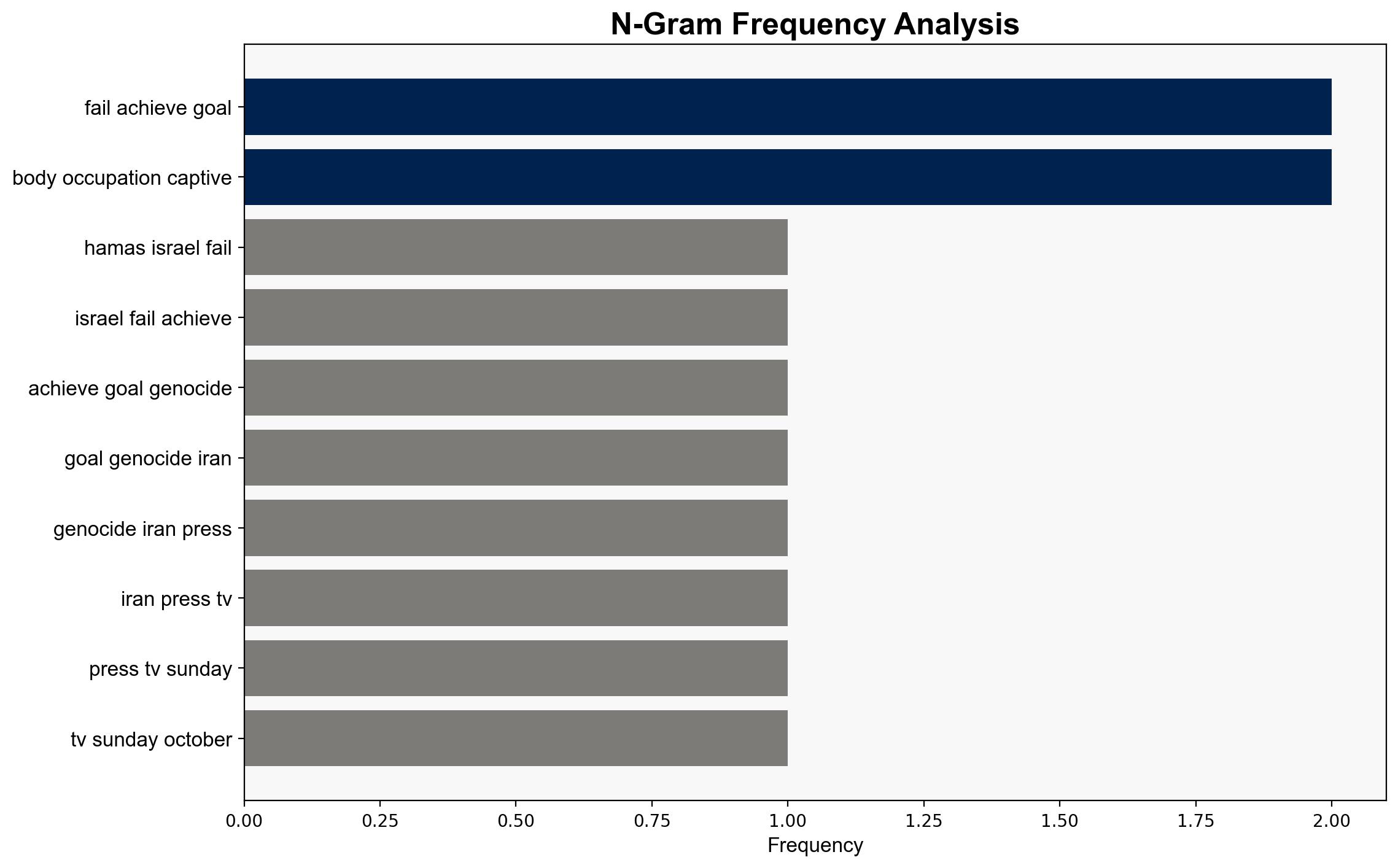Hamas Israel failed to achieve its goals through genocide – Globalsecurity.org
Published on: 2025-10-27
Intelligence Report: Hamas Israel failed to achieve its goals through genocide – Globalsecurity.org
1. BLUF (Bottom Line Up Front)
The analysis suggests that Israel’s strategic objectives in Gaza, as perceived by Hamas, have not been fully realized. The most supported hypothesis is that the conflict’s continuation is due to complex geopolitical dynamics rather than a singular failure of military objectives. Confidence level: Moderate. Recommended action: Engage in multilateral diplomatic efforts to de-escalate tensions and address humanitarian concerns.
2. Competing Hypotheses
1. **Hypothesis A**: Israel’s military operations in Gaza are primarily aimed at eliminating Hamas’s military capabilities, but have been misinterpreted as genocidal by Hamas for propaganda purposes.
– **Supporting Evidence**: Historical context of military engagements, Israel’s stated security objectives, and international diplomatic statements.
– **Contradictory Evidence**: Reports of civilian casualties and humanitarian crises, statements from Hamas and allied entities.
2. **Hypothesis B**: The ongoing conflict is part of a broader geopolitical strategy involving regional powers, where Israel’s actions are influenced by external pressures and alliances, leading to a protracted conflict.
– **Supporting Evidence**: Involvement of regional actors like Iran and Egypt, international diplomatic interventions, and statements from global leaders.
– **Contradictory Evidence**: Lack of direct evidence linking all regional actors to specific military operations in Gaza.
3. Key Assumptions and Red Flags
– **Assumptions**: Both hypotheses assume rational actor models for Israel and Hamas, potentially overlooking internal political pressures.
– **Red Flags**: Potential bias in media reporting, lack of independent verification of casualty figures, and the possibility of misinformation campaigns.
– **Blind Spots**: Limited insight into covert operations and intelligence-sharing between regional powers.
4. Implications and Strategic Risks
– **Geopolitical**: Escalation could draw in regional powers, destabilizing the Middle East further.
– **Economic**: Prolonged conflict may impact global markets, particularly energy prices.
– **Cyber**: Increased risk of cyber-attacks targeting critical infrastructure in Israel and allied nations.
– **Psychological**: Continued conflict may fuel radicalization and recruitment for extremist groups.
5. Recommendations and Outlook
- **Mitigation**: Strengthen diplomatic channels with regional actors to facilitate ceasefire negotiations.
- **Opportunities**: Leverage international forums to address humanitarian needs and rebuild trust.
- **Scenario Projections**:
– **Best Case**: Successful ceasefire and initiation of peace talks.
– **Worst Case**: Regional escalation involving multiple state actors.
– **Most Likely**: Continued low-intensity conflict with intermittent ceasefires.
6. Key Individuals and Entities
– Khalil al-Hayya
– Donald Trump
– Hamas
– Israeli government
– Regional actors (Iran, Egypt)
7. Thematic Tags
national security threats, cybersecurity, counter-terrorism, regional focus




